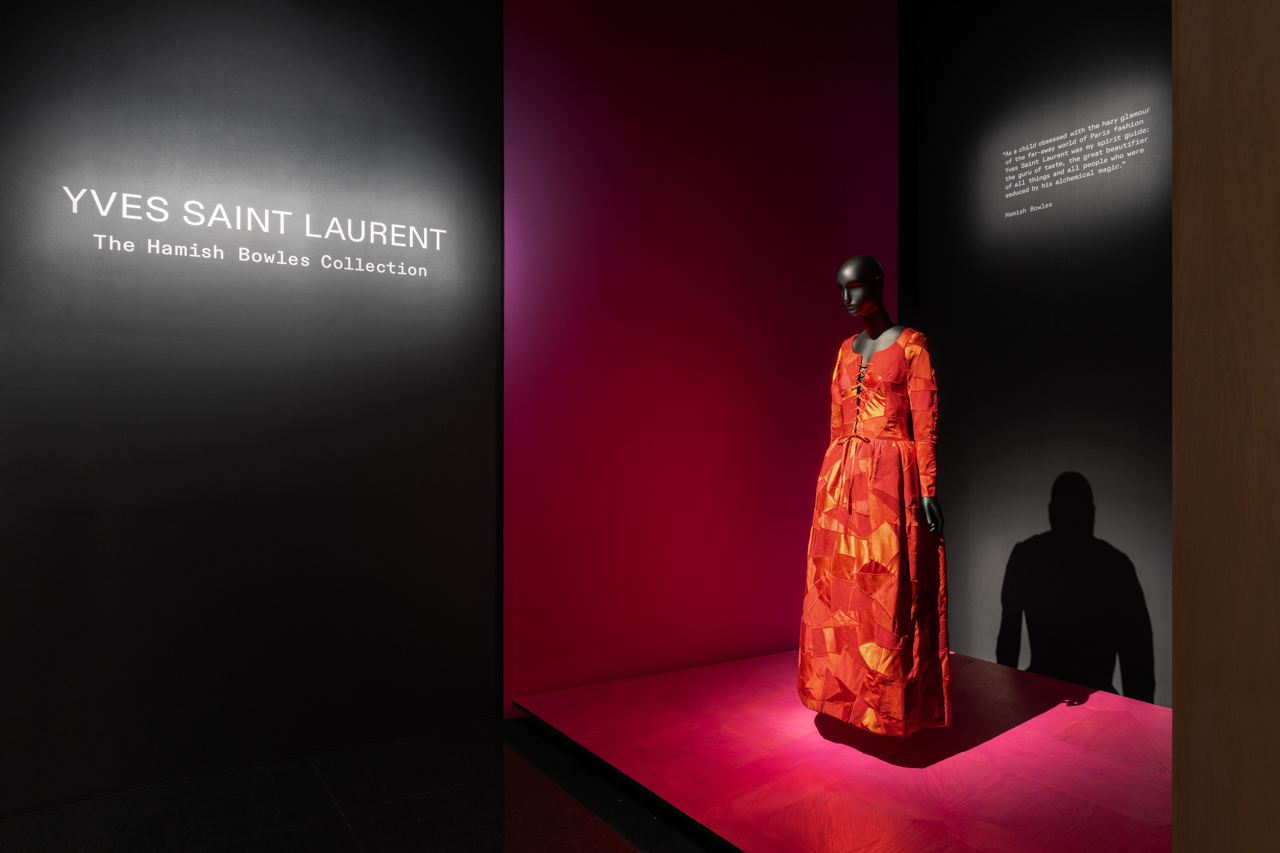The acclaimed exhibition “Yves Saint Laurent: The Hamish Bowles Collection” is nearing its final curtain call at the Yves Saint Laurent Museum in Marrakech. First unveiled on February 1, 2025, the show will remain open to the public until Sunday, January 4, 2026, at 6 p.m.—offering one last chance to experience this deeply personal exploration of the legendary designer’s world.
More than a simple fashion retrospective, the exhibition was conceived as a creative dialogue between two distinct perspectives: that of Yves Saint Laurent, the visionary couturier, and Hamish Bowles, the renowned fashion journalist and historian. Through this collaboration, visitors are invited into an intimate and curated journey that reflects both reverence and insight into Saint Laurent’s enduring legacy.
The exhibition brings together 55 rare and remarkable pieces from Bowles’ private archive. Each garment tells its own story while collectively tracing the evolution of Saint Laurent’s iconic aesthetic. The exhibition’s theatrical staging, designed by Patrick Kinmonth, leads visitors through a three-act narrative: from Saint Laurent’s formative years at Dior, to the founding of his own maison, and finally to the revolutionary launch of his ready-to-wear line, SAINT LAURENT Rive Gauche. With each silhouette, fabric, and cut, the show captures the delicate tension between memory and reinvention that defined the designer’s work.
As the museum prepares to usher in a new season of exhibitions in January 2026, these final weeks offer a last opportunity to witness this refined tête-à-tête between heritage and collection—an homage to artistry, obsession, and the timelessness of fashion.
Located just steps from the famed Jardin Majorelle, the Yves Saint Laurent Museum in Marrakech has, since its opening in 2017, become a cornerstone of cultural preservation. More than just a museum, it houses an auditorium, photography gallery, research library, café, and a rotating exhibition space. The institution is part of a broader mission led by the Fondation Jardin Majorelle, which is dedicated to safeguarding the designer’s memory while celebrating Morocco’s rich Berber, botanical, and artistic heritage.
